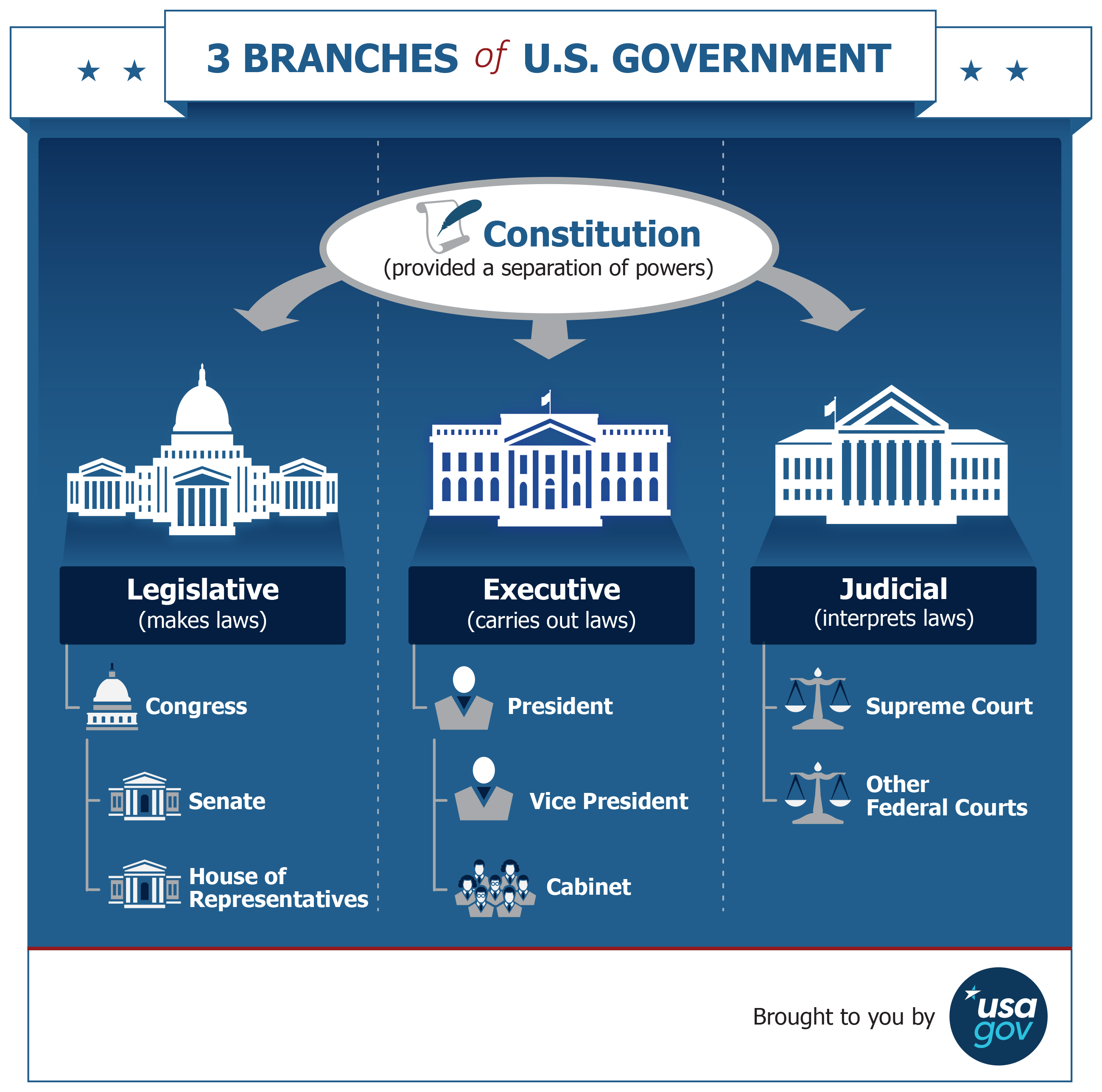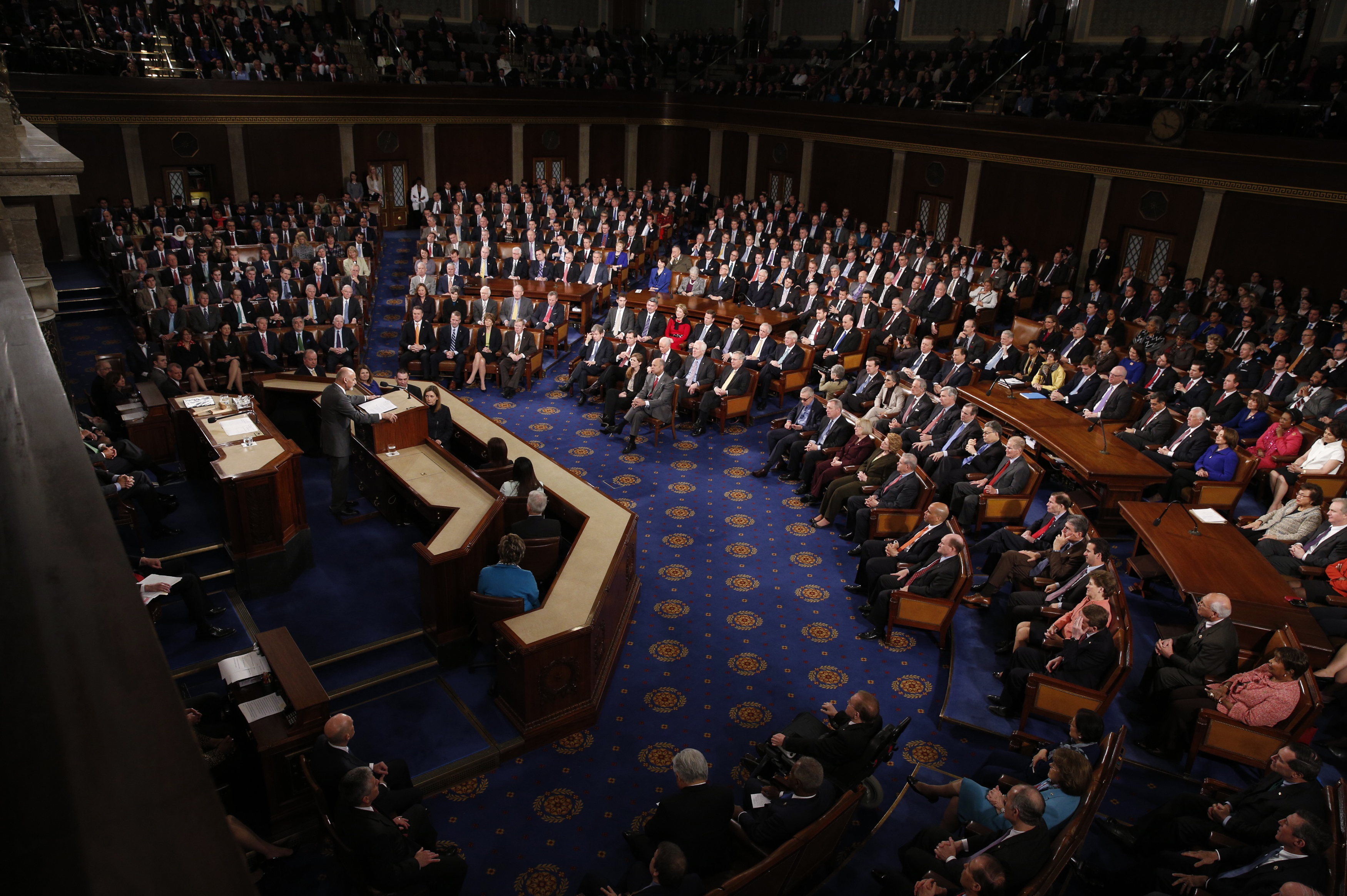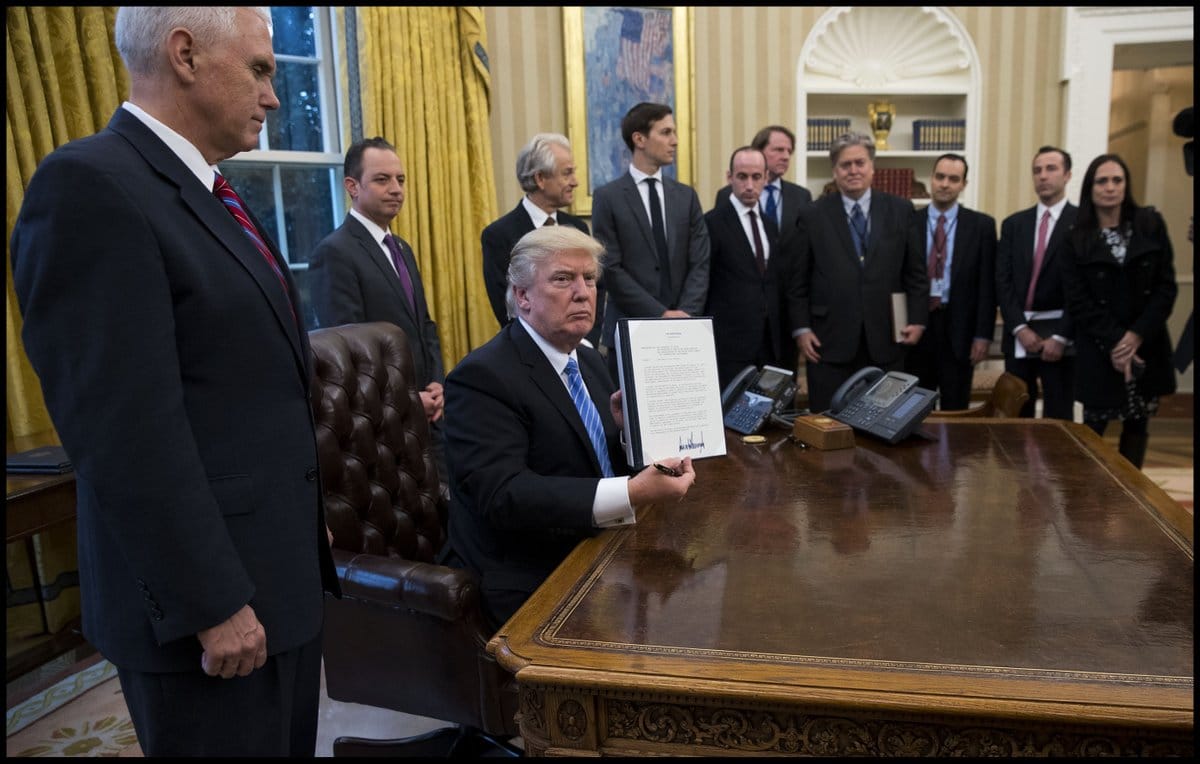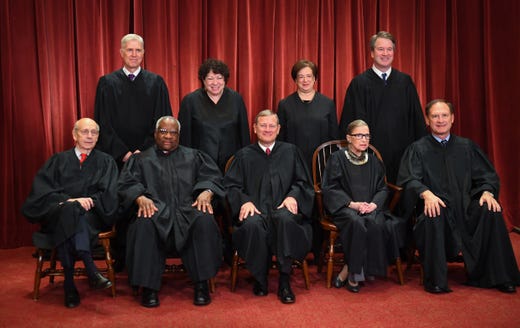Know your government




How the U.S. Government Is Organized
The Constitution of the United States divides the federal government into three branches to make sure no individual or group will have too much power:
- Legislative—Makes laws (Congress, comprised of the House of Representatives and Senate)
- Executive—Carries out laws (president, vice president, Cabinet, most federal agencies)
- Judicial—Evaluates laws (Supreme Court and other courts)
Each branch of government can change acts of the other branches:
- The president can veto legislation created by Congress and nominates heads of federal agencies.
- Congress confirms or rejects the president’s nominees and can remove the president from office in exceptional circumstances.
- The Justices of the Supreme Court, who can overturn unconstitutional laws, are nominated by the president and confirmed by the Senate.
This ability of each branch to respond to the actions of the other branches is called the system of checks and balances.
Legislative Branch
The legislative branch drafts proposed laws, confirms or rejects presidential nominations for heads of federal agencies, federal judges, and the Supreme Court, and has the authority to declare war. This branch includes Congress (the Senate and House of Representatives) and special agencies and offices that provide support services to Congress. American citizens have the right to vote for Senators and Representatives through free, confidential ballots.
- Senate—There are two elected Senators per state, totaling 100 Senators. A Senate term is six years and there is no limit to the number of terms an individual can serve.
- House of Representatives—There are 435 elected Representatives, which are divided among the 50 states in proportion to their total population. There are additional non-voting delegates who represent the District of Columbia and the territories. A Representative serves a two-year term, and there is no limit to the number of terms an individual can serve.
Executive Branch
The executive branch carries out and enforces laws. It includes the president, vice president, the Cabinet, executive departments, independent agencies, and other boards, commissions, and committees.
American citizens have the right to vote for the president and vice president through free, confidential ballots.
Key roles of the executive branch include:
- President—The president leads the country. He or she is the head of state, leader of the federal government, and Commander in Chief of the United States Armed Forces. The president serves a four-year term and can be elected no more than two times.
- Vice president—The vice president supports the president. If the president is unable to serve, the vice president becomes president. The vice president can be elected and serve an unlimited number of four-year terms as vice president, even under a different president.
- The Cabinet—Cabinet members serve as advisors to the president. They include the vice president, heads of executive departments, and other high-ranking government officials. Cabinet members are nominated by the president and must be approved by a simple majority of the Senate—51 votes if all 100 Senators vote.
Judicial Branch
The judicial branch interprets the meaning of laws, applies laws to individual cases, and decides if laws violate the Constitution. It is comprised of the Supreme Court and other federal courts.
- Supreme Court—The Supreme Court is the highest court in the United States. The Justices of the Supreme Court are nominated by the president and must be approved by the Senate.
- Nine members make up the Supreme Court—a Chief Justice and eight Associate Justices. There must be a minimum or quorum of six Justices to decide a case.
- If there is an even number of Justices and a case results in a tie, the lower court’s decision stands.
- There is no fixed term for Justices. They serve until their death, retirement, or removal in exceptional circumstances.
